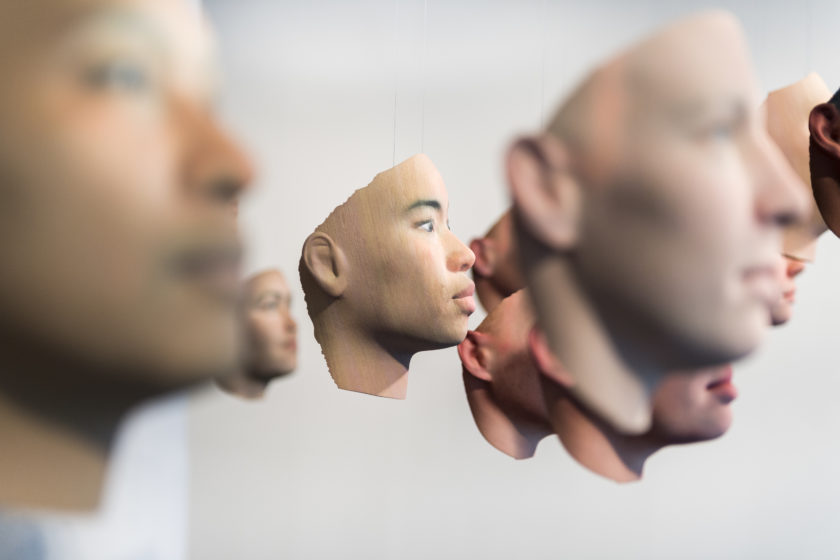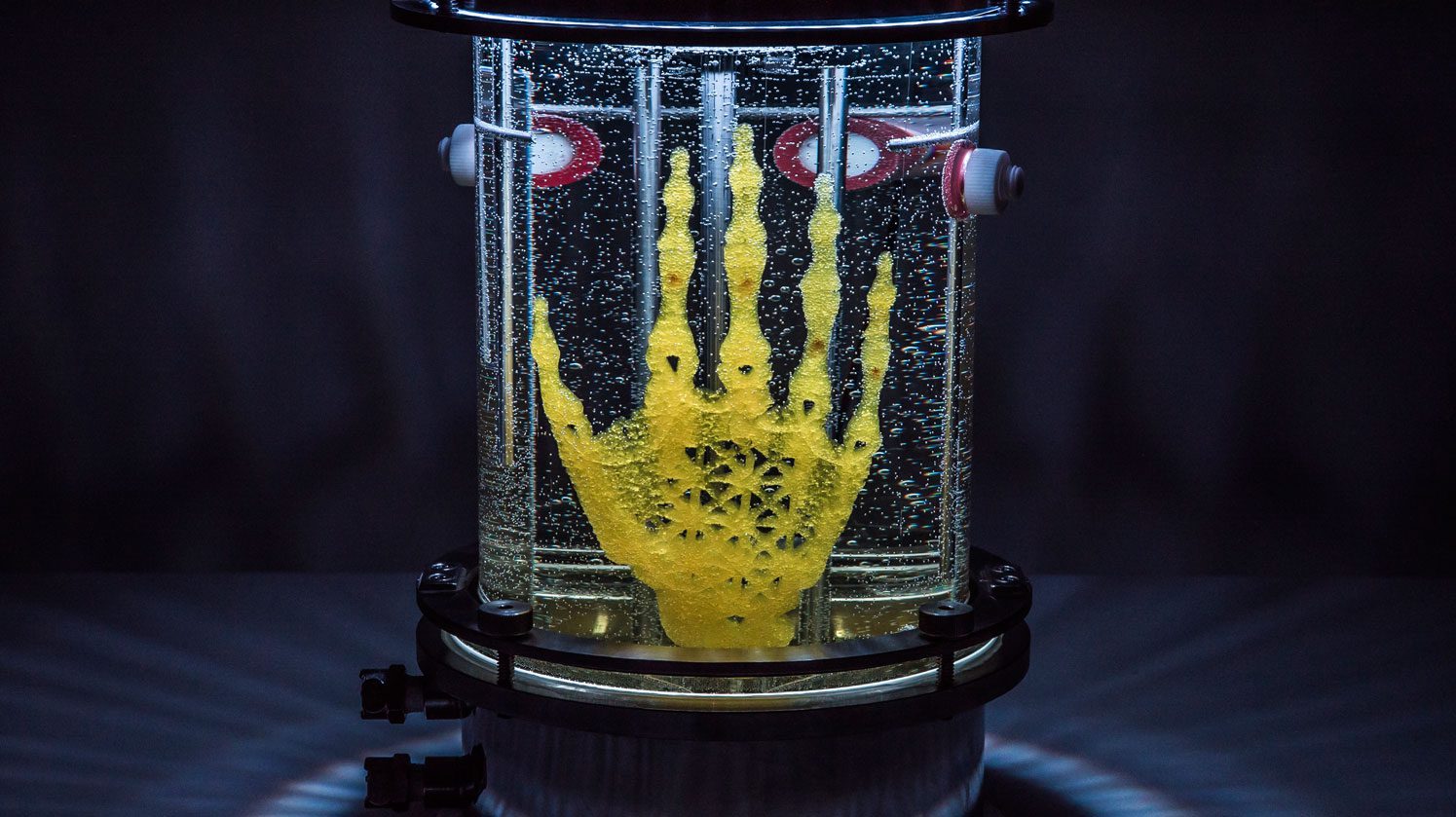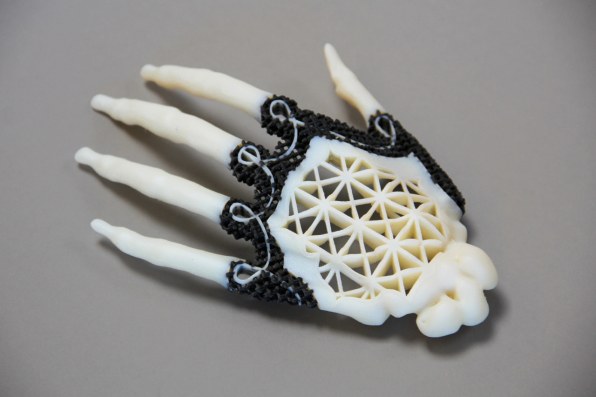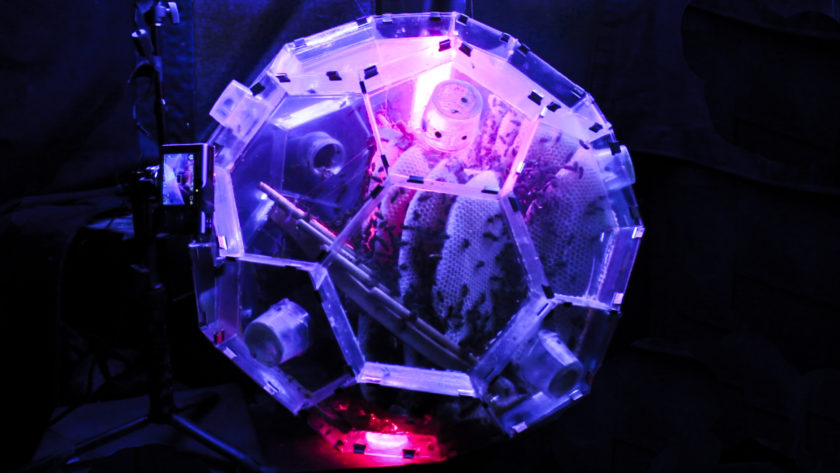
We’ve featured biologists who 3D print, and we’ve seen the artists who 3D print. But do you know about the 3D printing BioArtists who combine the best of both worlds?
The term ‘BioArt’ was coined by Eduardo Kac, who is known for the genetically modified Alba, a rabbit implanted with a Green Fluorescent Protein gene that is normally found in jellyfish. As the name would suggest, this would have caused Alba to glow green when exposed to blue light. While it is not confirmed if the photos that exist are real or modified to show the green glow, the significance of Alba is the idea behind it.
You may have inferred from just this one example that BioArt is often seen as controversial for the involvement of living things. While that debate will no doubt rage on, what is certain is that this art practice raises important questions about identity, sustainability, and ethics. It then takes these questions from the lab to the public, allowing scientists to benefit from unique perspectives and outside-of-the-box advances in research.
Today we will introduce you to three BioArtists who take advantage of 3D printing to maximize their practices. They all share their research and processes online, so should you feel inclined, you too can try your hand at these interdisciplinary practices.
Heather Dewey-Hagborg
Consider cigarette butts and chewed gum wads on the streets of NYC. They might be trash in the eyes of passersby, but in Heather Dewey-Hagborg’s eyes, they are genetic material. By analyzing these items, she is able to extract DNA and generate 3D portraits. As frightening as this sounds, the accuracy of it for identification is actually still highly unreliable. This is a result of not only the technology itself, but also personal subjectivity and stereotypes. What happens when these data get into the hands of policy makers, police, and other powerful actors? Dewey-Hagborg and Chelsea Manning set out to examine all these ideas in their collaborative installation “Probably Chelsea”.

Manning, a transgender artist, advocate, and columnist for The Guardian, was imprisoned for leaking top secret documents from her time at the American military. Paper Magazine commissioned Dewey-Hagborg to create a 3D portrait of Manning for their profile of her, since there was only one photo of Manning pre-transition on the Internet. The two clicked, and began collaborating on projects including “Radical Love,” “Suppressed Images,” and “Probably Chelsea.”
“Probably Chelsea” portrays 30 very different faces, all generated from Manning’s DNA. The artist aims to demonstrate the role of that racial and gender stereotypes play in the creation of portraits. By highlighting the different potential identities of DNA-based portraits of one person, Dewey-Hagborg refutes the “outmoded notions of biologically inscribed identity” to expose “a molecular solidarity that is clearly present even at the cellular level.”
For this exhibit, Dewey-Hagborg entrusted the 3D printing to Shapeways. She tells us that the faces are “generated algorithmically and printed out in full color and full detail by the Project 660 powder printer.” The precision and realistic rendering supplied by 3D printing creates a certain physical presence that allows for a “kind of encounter with another, looking them in the eye, seeing and viscerally feeling this face which is imaginary and yet real.”
Despite Dewey-Hagborg telling us that her work is positioned “more as a warning than as something I would encourage other people to do,” she has made her self-developed system of DNA phenotyping public on her blog with multiple available resources, and gives detailed interviews about her process. Hear from Heather directly in last year’s National Geographic film profile of the artist:
Amy Karle
If you’ve ever thought about redesigning your skeleton, you’re going to love Amy Karle’s biohacking project “Regenerative Reliquary”.

Courtesy of Amy Karle
Karle was driven to explore medical and artistic innovations by two influences: people with limb differences, and her childhood friend who is in need of a double lung implant as well as bone marrow therapy. Her friend continues to be scarred by the medicine that is sustaining her life. This moved Karle to find ways to generate bones and body parts with a person’s own cells.
She started looking into stem cells, which allow a patient to regenerate body parts rather than risking the complications of foreign implantation.

Using the Ember 3D printer, Karle prints her design of a hand skeleton in PEGDA hydrogel, which basically serves as a template for cell growth. Human stem cells are embedded into the hydrogel, and over time it will grow into tissue, and mineralize into bone. The hydrogel itself will disintegrate over time.
If Karle wasn’t going to use the pre-existing human skeleton, how did she go about the extraordinary task of designing a new bone structure? In the artist’s own words, “on the microscopic level, the scaffold mimics the trabecular structure of bone, the shape that triggers stem cells to become bone cells.”
Since this is a project designed for 3D printing, Karle wishes to take advantage of its digital nature and make the files open source in hopes that other researchers and artists may build on her research. The artist explained to Fast Company that the “benefit of making this as art is that I can test some of these theories and technologies, develop materials and processes, and experiment outside of the scope of protocols that would have to be followed if this was to be developed as an implant”.
Jennifer Berry

Think back to when you saw your first 3D printer. This wouldn’t have been in a robotics lab or a makerspace, but rather outside, under the sunshine. Because, according to Jennifer Berry, the OG 3D printers are bees.
As the artist explains, bees “work in a material made from their own bodies, formed at body temperature… a material that is safe to eat and is biodegradable and even recyclable.” The way Berry sees it, the honeycomb-building process is organic additive manufacturing in action. As an ecologist-consultant-designer-bee keeper, it was only natural that she became curious about the possibilities of a 3D printer modeled after these busy bees.
The goal of Berry’s invention, the B-Code Biopolymer 3D Printer, is to encourage sustainable, environmentally-considerate manufacturing. It collaborates with bees to 3D print a biodegradable, edible, and sustainable biopolymer as an alternative to existing materials that require wasteful processes.

So yes, it functions both as a temporary beehive and as a 3D printer. Berry made all material and design decisions to create the best environment for the bees by mimicking their hives as close as possible. Afterwards, Berry uses the honeycombs in her artwork.
The artist outlines her process on Instructables, for those interested in creating their own B-Code.
Are you a BioArtist, or inspired to start a BioArt project? Let us know in the comments about your printing ideas! And don’t miss out on the incredible selection of biology-inspired designs in our Marketplace.



